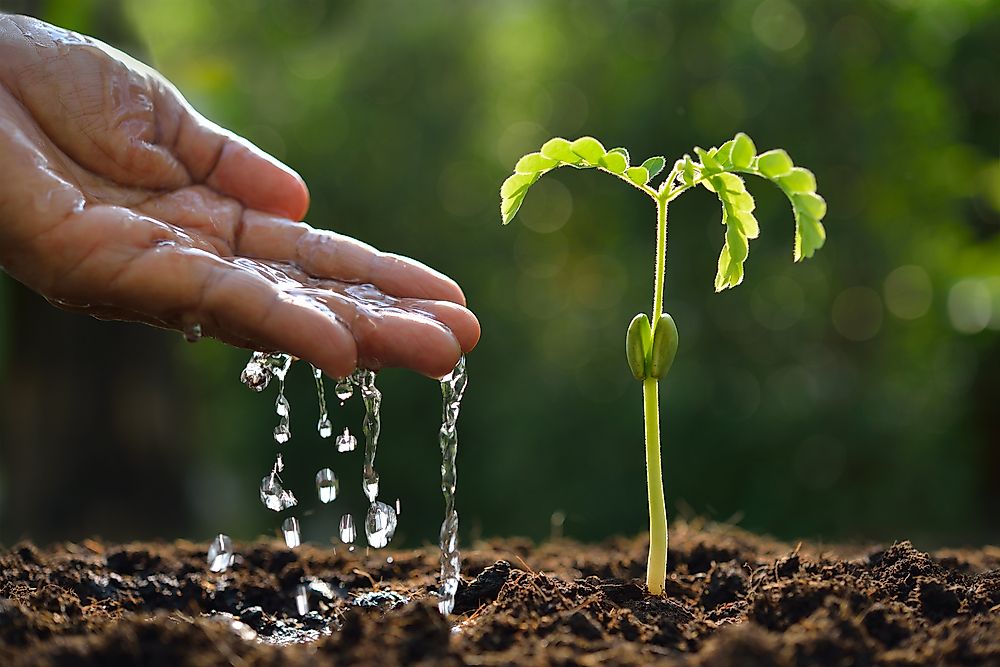What Is Pan Evaporation?

Pan evaporation is a weather measurement system that integrates several climatic conditions including rainfall, humidity, solar radiation, wind, temperature and drought dispersion. The system distinguishes the rates of evaporation based on the weather factor. The rate of evaporation is highest during hot, sunny, windy, and dry days and low during cloudy, calm, and humid weather. Although pan evaporation is no longer popular among researchers and scientist due to the emergence of better and more accurate technologies, pan evaporation is popular among farmers who seek to determine the amount of water required by their crops.
Evaporation Pans
An evaporation pan holds the water used during the process. The observer notes the quantity of water at certain weather conditions and notes the change in the quantity. Pans occur in different sizes and shapes, the most common being circular and square. “Class A” and the Sunken Colorado Pan are the most common in North America, but he Symon's Pan is popular in India, Europe, and South Africa. Advanced water pans are automated. They are fitted with water level sensors.
Class A Evaporation Pan
The U.S National Weather Service recommends the Class A evaporation pan. The pan contains cylinder that is 46.5 inches in diameter and 10 inches in depth. The pam is placed on a leveled wooden base and is enclosed by a chain-link fence to avoid interference by animals and insects. The rate of evaporation is determined daily by recording the depth of water. The initial quantity of the water is set at exactly two inches; at the end of the day, the water is then refilled. The amount of water it takes to fill the pan back to two inches is the rate of evaporation. The Class A Evaporation Pan is ineffective when the level of rainfall is beyond 30mm unless it is emptied several times in a 24 hour period. Past recordings using the pan have revealed that areas that experience heavy rainfall in excess of 30mm experience higher rates of evaporation on a daily basis than months where conditions suitable for evaporations prevail. When rainfall more than 55 mm is recorded, the pan is likely to overflow.
Sunken Colorado Pan
The sunken Colorado pan is square shaped. It is 3 ft. in width with a depth of 18 inches. The pan is made of galvanized iron. It is buried in the ground to a depth of 2 inches of its rim.
Global Warming and Pan Evaporation
It is theorized that global warming leads to increased rate of evaporation which in turn leads to accelerated hydrological cycle. With desertification spreading and weather patterns changing rapidly, it would take several years to determine to determine the change in the rate of evaporation on earth.











